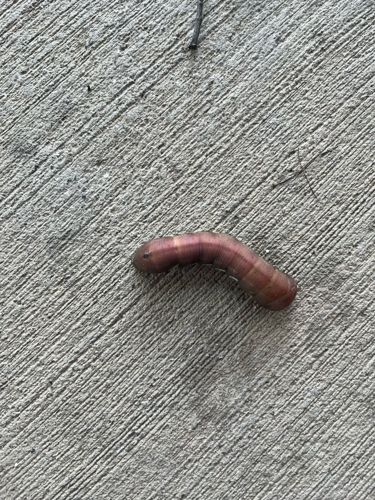Earthworm
Scientific Name: Examples include Lumbricus terrestris (Common Earthworm/Nightcrawler), Eisenia fetida (Red Wiggler). The image likely shows a species from the family Lumbricidae.
Order & Family: Order: Crassiclitellata (formerly part of Oligochaeta); Family: Lumbricidae (for common European earthworms like 'nightcrawlers' or 'red wigglers', though many other families exist globally) or other families depending on species.
Size: Size varies greatly by species, but common earthworms can range from 1 cm (0.4 inches) to over 30 cm (12 inches) in length. Some tropical species can grow much larger, exceeding 1 meter (3 feet).

Natural Habitat
Earthworms are found in a wide variety of terrestrial habitats globally, preferring moist soil rich in organic matter. They are commonly found in gardens, forests, grasslands, and agricultural fields. They thrive in damp, well-aerated soil.
Diet & Feeding
Earthworms are detritivores, meaning they feed on decaying organic matter such as dead leaves, plant debris, and microorganisms found in the soil. They ingest soil as they burrow, extracting nutrients from the organic material within it.
Behavior Patterns
Earthworms are segmented worms that move by contracting and relaxing their muscles, allowing them to burrow through soil. They are primarily nocturnal, coming to the surface to feed and mate, especially after rain (which is why they are often seen on paved surfaces after a downpour, as they can drown in oversaturated soil). They are hermaphroditic, possessing both male and female reproductive organs, but typically require a partner for reproduction, exchanging sperm. Their castings (excrement) are nutrient-rich.
Risks & Benefits
Benefits: Earthworms are incredibly beneficial to ecosystems and agriculture. They aerate the soil, improve drainage, mix soil layers, and enhance nutrient availability for plants by breaking down organic matter and producing nutrient-rich castings. They are a vital food source for many animals, including birds, moles, and other invertebrates. Risks: In some non-native environments (e.g., certain North American forests), invasive earthworm species can negatively impact native ecosystems by altering soil structure and nutrient cycling, affecting native plant growth and forest regeneration. For humans, there are generally no direct risks; they do not bite or transmit diseases.
Identified on: 8/12/2025